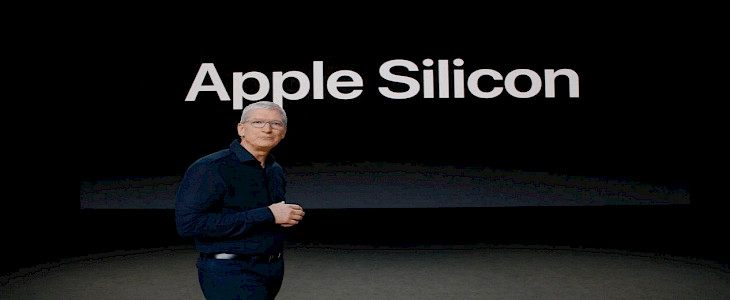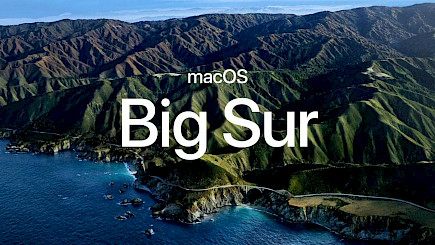
Apple is reducing its reliance on Intel processors in its Mac lineup, as long-rumored. Instead, Apple's desktop environment will move to an ARM-based SoC architecture. The same silicon powering the iPad and iPhone powers the Mac.
Apple, which carefully avoids the ARM debate by calling its SoCs "Apple Silicon," emphasizes how the tighter integration will give the company complete control over its Mac hardware and software. The first "Apple Silicon" Macs will be available later this year; at Apple's WWDC 2020 keynote, CEO Tim Cook stated that Macs with Intel chipsets were still in the works.
A "Quick Start Program", which will guide developers through the transition, will be available to them. In addition, you will have access to documentation and support forums.
Apple will use the A-series naming scheme to design SoCs for the Mac. However, it will add a "z" to the processor (much like it uses an "x" for its iPad A-series processors). This is Apple's first example of how it sees its Macs fitting in its lineup. The plain 'A" SoC is for the iPhone. The 'X' version is for the iPad, and the 'Z' one is for Macs.
This SoC scheme is a hint at the power of each chipset. The Mac requires more processing power than the iPhone and iPad. "The Mac has been a pioneer in personal computing since its inception". Cook stated that today is a historic day for Apple silicon as we announce our transition to Apple silicon. Apple silicon will give the Mac more power and capability than ever thanks to its industry-leading performance and powerful features.
Big Sur
Big Sur contains many changes that are meant to make the Mac look more like its mobile counterparts. For example, icons are now "squircles" rather than vector iconography, and features like the Notification Center and Finder have much more "breathing area" between rows and sections. In addition, the Messages app has mobile-first features like stickers, confetti, and lasers for sending specific messages. Apple didn't mention it, but a watchful eye saw the App Store icon in the Messages app on Mac during the keynote.

This is another example of Apple's larger ecosystem view of its Macs: Although they are powerful, they will be more in line with Apple's design language. Mobile apps that do not have a desktop counterpart are now available on Macs in a smaller window view. Apple quietly developed a universal platform that might work.
Developers
In this two-year transition, Universal 2 and Rosetta 2 will be prominent features.
Universal 2 is a one-size-fits-all binary that enables programs to run on Intel or Apple Silicon-based Macs. Rosetta 2 emulator allows older Mac apps to be translated into run-time for newer machines.
Apple does not seem to ask developers to do any retooling of apps. Universal 2 and Rosetta 2 will work as run-time or build features to ensure that all Mac apps can be used across different machines in the future.
Xcode 12 is a Universal app that runs natively on Intel-based CPUs as well as Apple Silicon.
This allows for excellent performance and a quick interface. * The unified macOS SDK includes all the frameworks and debuggers you need to create apps that run on Apple Silicon or the Intel x86_64 CPU.
Another essential feature is that when you open a project in Xcode 12, it immediately updates the app with release builds for all of Apple's platforms (which, again, are now all A-series SoC-based). These updated versions contain a binary "slice" for Apple Silicon and a binary "slice" for Intel X-series CPUs. They are then merged into a single binary for submission to the App Store.
All indications point to new Macs with A-series processors adhering to the same locked-down ecosystem as iPhones or iPads. This "universal app build" could be a precursor to a unified App store down the road.
On the iPad, iPhone, and Apple Watch, Apple has never permitted installing programs from sources other than the App Store.
The control Apple has over its hardware and software allows it to create class-leading products while limiting consumer options. When it came to downloading, the Mac was Apple's final bastion of independence.
A General Saying
This new scenario has both advantages and disadvantages. Building and upgrading applications to operate across Apple's complete range has suddenly been a lot easier, much as Catalyst did for porting iPadOS apps to the Mac.

Xcode with Universal 2 handles the binary-splitting-and-sewing for you to make older Mac apps available to Apple Silicon. Rosetta 2 ensures that programs you already own operate on new Macs even if you don't update them.
It is not clear where the following steps will take us. Apple once requested that developers "notarize" their apps. This was a concession to developers who were not interested in the Mac App Store. However, it seems that the company is also planning to close off its desktop garden.
Although it hasn't been stated explicitly, WWDC 2020 will make it clear that non-native macOS apps are being warned: Assimilate or Die. This transition will take at least two years. However, it isn't clear what will happen 24 months later for apps that haven't been updated.
For example, what happens if Vim and eMacs, Visual Studio, and Atom aren't up-to-date to work with Apple Silicon. While you may laugh, there are still some apps that don’t support dark mode. Maybe their developers decided the Mac platform wasn’t worth investing in.
Apple Silicon is also a necessity. After years of attempting to persuade developers to build applications for Mac or convert iPadOS apps, Apple is just making the Mac more like a mobile device in terms of hardware and software while directing apps onto the desktop—because the previous strategy failed.
Conclusion
With the new chipsets, onboard Apple is trying its level best to bring a new revolution in the world of computing. Will it work out? Will it be as good as Intel or AMD processors? We will have to wait and see.
As of now, all we can do is hope for the best. Because innovation never stops, and so shouldn’t Apple.





